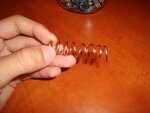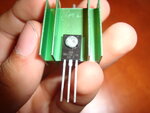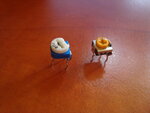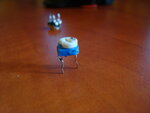KiralyCraft
Newbie level 4

Hello there, i'm new here so please excuse me if i posted this in the wrong thread.
I am building an FM transmitter and ran into two problems. The circuit i designed uses a 2SC1162 transistor, but the specific one is unavailable in my country apparently. I have been looking for equivalents but with no luck so far. Thus i came here for suggestions.
My second problem is that i have to use a 1 cm diameter, 6 cm length, 7 turns of 18SWG wire, inductor. If i calculated right, the inductance is 7.5 uH. I would rather buy an inductor that works as expected, rather than building one myself with a chqnce of failiure. I am asking what kind of inductor should i get?
I am building an FM transmitter and ran into two problems. The circuit i designed uses a 2SC1162 transistor, but the specific one is unavailable in my country apparently. I have been looking for equivalents but with no luck so far. Thus i came here for suggestions.
My second problem is that i have to use a 1 cm diameter, 6 cm length, 7 turns of 18SWG wire, inductor. If i calculated right, the inductance is 7.5 uH. I would rather buy an inductor that works as expected, rather than building one myself with a chqnce of failiure. I am asking what kind of inductor should i get?






